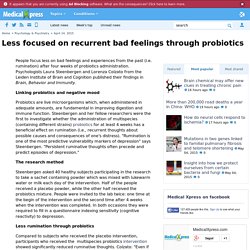

Information on Gallbladder Disease. Now that I have Gallbladder Disease, how did I get it in the first place?

A thorough understanding of this is what will help you to manage your gallbladder problem. CAUSES or Risk Factors for Gallbladder Disease Symptoms of Gallbladder Disease Specific Gallbladder Diseases The combination of a "civilized" diet, of saturated fats, fried foods, hydrogenated (or fake) fats and white sugar, white flour, highly-processed, nutrient-stripped food, along with a sedentary lifestyle tends to create an environment ripe for the formation of gallstones or other gallbladder problems. Eating too many of the wrong fats puts you at risk, but people who eat no fat at all are also at risk. No fat in the diet means that the gallbladder works less frequently, which could cause stasis and bile thickening. Although being female is an increased risk for gallbladder disease, according to a study published in BMC Gastroenterology 2002,(1) gallstones in children is on the rise. Meet Your Second Brain: The Gut. Most of us can relate to the experience of having butterflies in our stomach, or to a visceral gut-wrenching feeling, and how often are we told not to ignore our “gut-instinct” or “gut-feeling” when making a decision.

Even from our simple slang, it’s clear just how symbolically connected the gut is to our emotions. Now, there’s tangible proof to support these popular metaphors. We all have a microbiome, and they are as unique as our neural pathways Research has shown that the body is actually composed of more bacteria than cells. We are more bug than human! The gut is no longer seen as an entity with the sole purpose of helping with all aspects of digestion. SIgA Testing and Treatment. I read with interest the article from Dr Albert Robbins about SIgA recently and thought you might like to know how to find out if your own levels are low, and what you can do about it if they are.

In practice, if I find a person is not able to fight off infections, candida or resolve allergies, SIgA is one of the first factors I look at. It gives a good picture of how strong the body’s mucosal immunity is and, if you like, how much ‘fight’ that person has to complete the job. In this follow-up piece, we will recap a bit about SIgA, then look specifically at testing and treatment. Secretory IgA (SIgA) is the main immunoglobulin in mucus secretions. The intestinal cells produce about 2-3g of SIgA every day and production tends to peak in childhood and start to decline after about sixty years old. Mucosal Immunology - Secretory IgA's complex roles in immunity and mucosal homeostasis in the gut. Teff-Flavour-Perception-1996.pdf. Woods1991.pdf. En. It is not accidental that all phenomena of human life are dominated by the search for daily bread … .

Precise knowledge of what happens to food entering the organism must be the subject of ideal physiology, the physiology of the future. Less focused on recurrent bad feelings through probiotics. People focus less on bad feelings and experiences from the past (i.e. rumination) after four weeks of probiotics administration.

Psychologists Laura Steenbergen and Lorenza Colzato from the Leiden Institute of Brain and Cognition published their findings in Brain, Behavior and Immunity. Linking probiotics and negative mood. AE. The human microbiome: Me, myself, us. All about lectins: Here’s what you need to know. What are lectins?

Lectins are a type of protein that can bind to cell membranes. They are sugar-binding and become the “glyco” portion of glycoconjugates on the membranes. Lectins offer a way for molecules to stick together without getting the immune system involved, which can influence cell-cell interaction. More Coffee May Lead To A Longer Life. Probiotics Dosage Suggestions - Custom Probiotics. Start with one capsule (60 Billion cfu’s) first thing in the morning (30 minutes prior to eating) and one capsule at bedtime with a full glass of water.

Continue this dosage for three days. After three days raise the dosage to two capsules first thing in the morning and two at bedtime, if need be. Continue for 3 days. If you are not getting the expected results, raise the dosage to three capsules first thing in the morning and three at bedtime. Remain at the dosage that works best for you. NOTE: Every digestive system is different and unique like a fingerprint. Start with one adult scoop (0.8 gram, 200 billion cfu’s) of the probiotic powder first thing in the morning on an empty stomach (30 minutes prior to eating). Details on Probiotics - Custom Probiotics. Probiotic bacteria are generally, though not exclusively, lactic acid bacteria and include Lactobacillus acidophilus, L. casei, L. bulgaricus, L. plantarum, L. salivarius, L. rhamnosus, L. reuteri, Bifidobacterium bifidum, B. longum, B. infantis and S. thermophilus.

Probiotic bacteria are used in the production of yogurt, various fermented milk products and dietary supplemegutnts. Lactobacilli and Bifidobacteria are Gram-positive lactic acid-producing bacteria that constitute a major part of the normal intestinal microflora in animals and humans. These friendly bacteria play a key role in enhancing resistance to colonization by exogenous, potentially pathogenic organisms.